- The Library of Babel
- Posts
- Foolishly trying to image Pink Floyd with Syd Barrett still at the helm
Foolishly trying to image Pink Floyd with Syd Barrett still at the helm
What if you were still here?
"Wish You Were Here" by Pink Floyd is the closest thing I know to being injected with beauty straight to the vein. It is a love letter of a song to a lost friendship never to be recovered.
Roger Waters and Syd Barrett were childhood friends who lived a few blocks from each other in the city of Cambridge. United by their love of rock 'n' roll—a musical genre just invented and already sweeping what the newspapers began calling "The Teenage World"—the two, together with Nick Mason and Richard Wright, formed a band.
The band we know as Pink Floyd came into being in 1965 in London. Syd Barrett was at its head: the main lyricist, the idea man, and of course, the lead singer. His charisma, as anyone who knew the young man at the time agrees, was magnetic. However, with the release of "The Piper at the Gates of Dawn," Pink Floyd’s first studio album, it became increasingly difficult to work with Syd or even stay by his side.
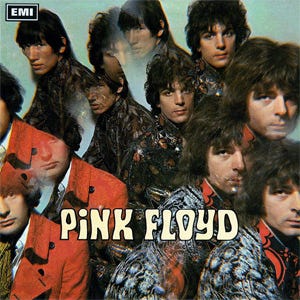
The Piper at the Gates of Dawn cover, 1967
There are different opinions as to what happened to Syd, but what is clear is that he began taking copious amounts of drugs, especially LSD and weed, but also a wide variety of other substances. He also stopped attending many of the band’s obligations: he missed rehearsals, TV appearances, and even concerts. When he did show up, it was hard to get him out of his head. As time went by, Syd became increasingly paranoid. At one concert, the lead singer turned his back to the audience and kept playing just one note over and over again. Something had to give.
At first, the other band members didn’t want to give up on their friend and leader. They envisioned a backseat role for him, similar to the one Brian Wilson played at the time for The Beach Boys. Syd would continue to write songs for the band, which he could do from the comfort and security of his home due to his difficulty performing on stage. David Gilmour, a friend of Syd and Roger Waters, replaced him as the guitarist.
This new compromise did not last very long. Syd’s final contribution to the band’s discography was the song “Jugband Blues”, which appeared on “A Saucerful of Secrets”, Pink Floyd’s second studio album.
Whether the lyrics of the song were directed at his band members, as some argue, or at the world at large, just reading them conveys an eerie feeling that the man writing them (“And I’m wondering who could be writing this song”) is already alienated from the so-called normal, everyday accepted reality that surrounds him. There is nothing romantic about that.
It's awfully considerate of you to think of me here
And I'm most obliged to you for making it clear
That I'm not here
And I never knew the moon could be so big
And I never knew the moon could be so blue
And I'm grateful that you threw away my old shoes
And brought me here instead dressed in red
And I'm wondering who could be writing this song
I don't care if the sun don't shine
And I don't care if nothing is mine
And I don't care if I'm nervous with you
I'll do my loving in the winter
And the sea isn't green
And I love the queen
And what exactly is a dream
And what exactly is a joke
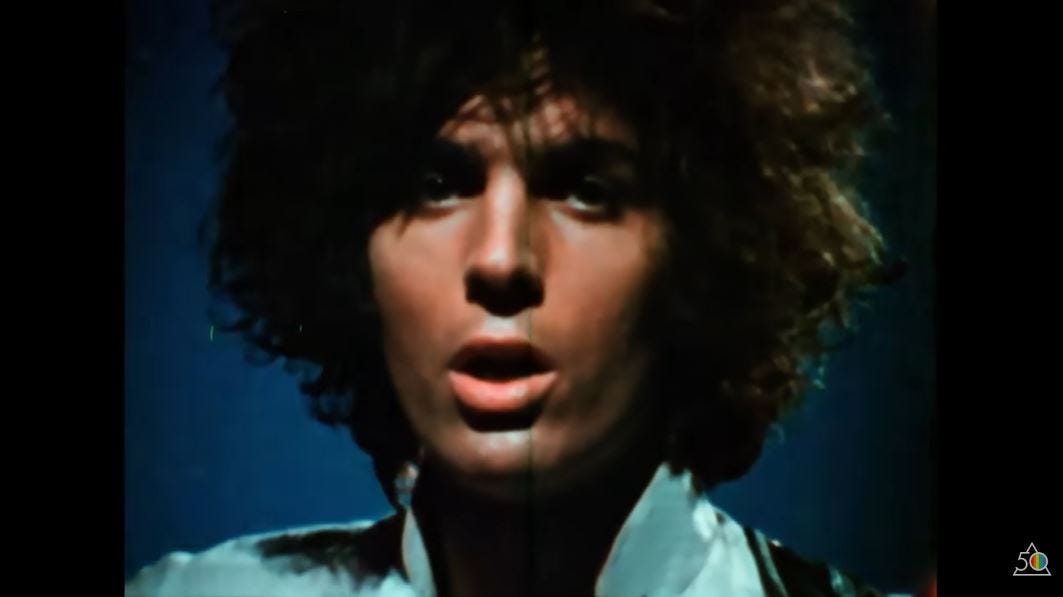
Syd in the video clip for Jugband Blues
When Syd finally and officially left the band in 1968, there remained a creative void to be filled. It fell mainly on Roger Waters’s shoulders to fill it.
Jump seven years and eight more studio albums into the future. We’re in 1975 now. While The Dark Side of the Moon is an absolute masterpiece, the album that followed it—“Wish You Were Here”, the band’s ninth album—is widely considered the one in which Pink Floyd finally found their sound.
Not only that. The Dark Side of the Moon made them famous and rich. However, as Waters expressed time and again, he was surprised by the reception, mainly to the lyrics in that album, which were his own. He thought, for example, that the lyrics for the song “Breathe” (“Breathe, breathe in the air / Don't be afraid to care”) were shallow and just not that good.
Wish You Were Here was a chance to improve on that. While the theme of mental illness was not new for the band—The Dark Side of the Moon, after all, alludes to lunacy rather than astronomy—the specter of their lost friendship with Syd, the termination of any and all communication with the former leader, and for Waters, a childhood friend, is what inspired him to write the title song of the album.
I have no idea how to define true poetry or how to separate it from the false. I only know that it looks something like this:
So, so you think you can tell
Heaven from Hell? Blue skies from pain?
Can you tell a green field from a cold steel rail?
A smile from a veil? Do you think you can tell?
Did they get you to trade your heroes for ghosts?
Hot ashes for trees? Hot air for a cool breeze?
Cold comfort for change? Did you exchange
A walk-on part in the war for a lead role in a cage?
How I wish, how I wish you were here
We're just two lost souls swimming in a fishbowl, year after year
Running over the same old ground, what have we found?
The same old fears, wish you were here
No less shocking and heartbreaking is the fact that Syd visited his friends while they were in the process of recording their album in 1974. At least at first, they didn’t even recognize him. He was bald, overweight, and not altogether responsive. He soon left.
What I’m going to do next is awfully foolish. There is a famous saying in the Talmud that after the destruction of the First Temple, “Prophecy was given to the fools and the babies.” So, as a professed fool—my favorite card of the Tarot—what I want to think about here is how Pink Floyd, the band we all know and love, would have looked if Syd Barrett hadn’t left it back in 1968.
To try and answer that, we need to look at what Syd did while in the band, namely the first and only Pink Floyd album with him at the helm, The Piper at the Gates of Dawn, plus the two solo albums he released in 1970 before quitting music altogether.
First off, The Piper at the Gates of Dawn. What a weird ride it is to listen to that album, which is a favorite of mine. I listened to it so much as a teenager, long before I even knew the story of Syd or the other band members. And it’s only much, much later, like six months ago, that I found out what the reference in the title was.
The Piper at the Gates of Dawn is the name of Chapter 7 in “The Wind in the Willows” by Kenneth Grahame. It is the mystical chapter in that otherwise quite orderly and uneventful book (in the best possible sense!). I mean, there is a war at the end of the book, a fight to regain Toad’s house, but most of the time we can compare the characters in this wonderful novel to the characters in Seinfeld. Chapter 7, in sharp contrast, is about the time Mole and Rat go out on a boat in search of their friend Otter’s missing child. After hours of searching the various places the child can hide in, and as the sun sets, they hear in the distance what can only be described as heavenly music that guides them. It is the music of the god Pan, who guards the missing child. It is an experience that transforms both animals, but one that they won't remember.
For this is the last best gift that the kindly demi-god is careful to bestow on those to whom he has revealed himself in their helping: the gift of forgetfulness. Lest the awful remembrance should remain and grow, and overshadow mirth and pleasure, and the great haunting memory should spoil all the after-lives of little animals helped out of difficulties, in order that they should be happy and lighthearted as before.
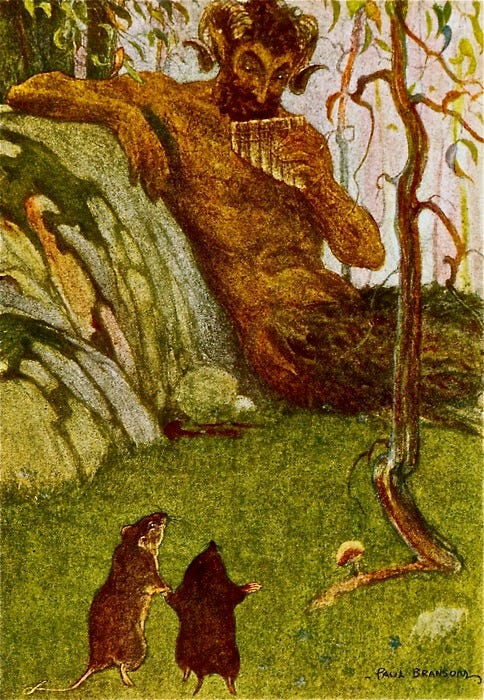
Illustration by the late american cartoonist Paul Bransom
The music Syd led Pink Floyd, and later himself, to produce can feel like the equivalent of that mystical journey. The words are childish and profound at the same time—hard to pin down. Psychedelic might be the term of the time, but I think of it as more surreal than anything.
I’m not sure if some or most of the lyrics were written using surrealist methods like automatic writing—writing whatever comes to your mind in a semi-meditative state, without stopping to read backwards or to plan what comes next—but the words certainly have their own logic, which is maybe the logic of dreams, of symbols colliding without overt sense to them.
“Bike,” the closing song of the album, is one of the weirdest songs in existence. It’s a nursery rhyme that also opens and peeks inside the mind of an odd, very odd, bloke.
I've got a bike, you can ride it if you like
It's got a basket, a bell that rings
And things to make it look good
I'd give it to you if I could, but I borrowed it
You're the kind of girl that fits in with my world
I'll give you anything, everything if you want things
I've got a cloak it's a bit of a joke
There's a tear up the front
It's red and black, I've had it for months
If you think it could look good, then I guess it should
Indeed, some of the great songs on The Piper at the Gates of Dawn sound like nursery rhymes infused with fairy tales. Now, initially I didn’t want to stress the fairy tale theme too much because... well... how do you talk about it without sounding extremely silly? Thankfully, while researching this piece, I came across interviews with multiple people who knew Syd and who had made the comparison before me.
I always have this memory of him in his room, walking around barefoot, but standing in this weird way of his on his tiptoes, sort of hovering, with his hair hanging down and a cigarette in his hand. Almost elf-like in a way.
He had this style of dressing, terribly arty. He’d turn up in the pub wearing some blue and white matelot shirt, looking as though he’d just walked out of Montparnasse in the 1920s.
- Aubrey ‘Po’ Powell, quoted in “Comfortably Numb: The Inside Story of Pink Floyd” by Mark Blake (which I highly recommend)
I love this passage because it does all the work for me: Syd is compared to an Elf, which in European mythologies is synonymous with fairy. And the reference to Montparnasse in the 1920s? That is just the time and place where the Surrealist movement was born.
In some strange and mysterious ways, The Piper at the Gates of Dawn is deeply concerned with the encounter with Faerie. In his 1939 essay "On Fairy-Stories," J.R.R. Tolkien, the scholar of mythology, epic literature, and fairy tales (most seem to forget that last part), explains his concept of the fairy tale. Fairy stories, as Tolkien called them, are not so much about fairies themselves as they are about the encounter of man with Fairyland:
For fairy-stories are not in normal English usage stories about fairies or elves, but stories about Fairy, that is Faerie, the realm or state in which fairies have their being. Faerie contains many things besides elves and fays, and besides dwarfs, witches, trolls, giants, or dragons: it holds the seas, the sun, the moon, the sky; and the earth, and all things that are in it: tree and bird, water and stone, wine and bread, and ourselves, mortal men, when we are enchanted.
After reading many accounts and interpretations of Syd Barrett's music, I am positive that this description—taken from the opening lines of an essay by J.R.R. Tolkien—is the best and clearest (yet appropriately mysterious, as it must be perhaps) description of Syd's music.
On a side note, Tolkien actually mentions The Wind in the Willows in his essay as an example of a work that some falsely view as a fairy tale. According to the author of The Lord of the Rings, Kenneth Grahame's novel isn't a fairy tale but what is called "beast-fables." While I mostly agree, Chapter 7 and the meeting with Pan are a proper fairy tale along the lines Tolkien is careful to reveal.
'This is the place of my song-dream, the place the music played to me,' whispered the Rat, as if in a trance. 'Here, in this holy place, here if anywhere, surely we shall find Him!'
Then suddenly the Mole felt a great Awe fall upon him, an awe that turned his muscles to water, bowed his head, and rooted his feet to the ground. It was no panic terror— indeed he felt wonderfully at peace and happy— but it was an awe that smote and held him and, without seeing, he knew it could only mean that some august Presence was very, very near. With difficulty he turned to look for his friend. and saw him at his side cowed, stricken, and trembling violently. And still there was utter silence in the populous bird-haunted branches around them; and still the light grew and grew.
If the god Pan helped the two animal friends find what they were looking for, what would a truly mischievous Piper—manifested as excessive drugs use and an erratic mind—lead you to find?
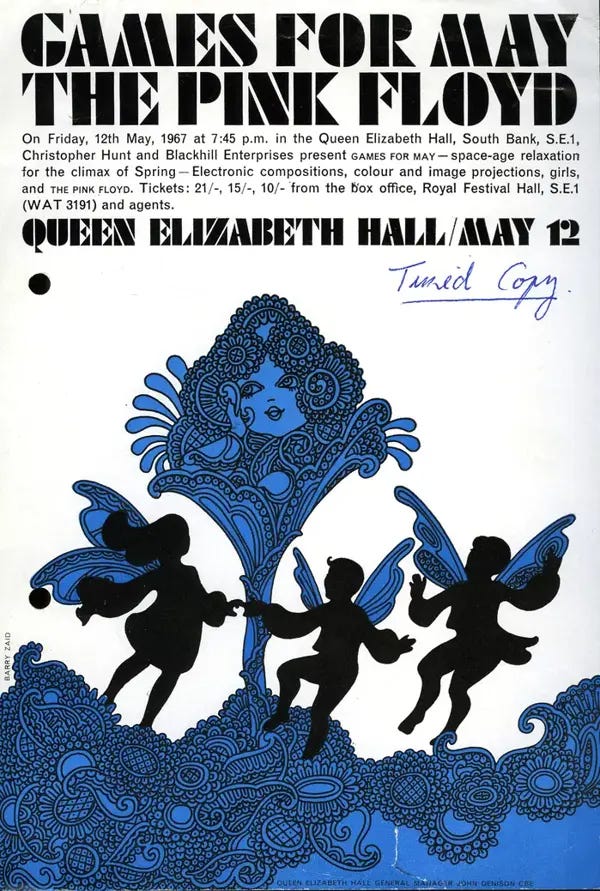
A poster for one of the band’s first shows
Part of the post-Syd Pink Floyd lore revolves around the absence of Syd Barrett from the band, leading many songs to be interpreted retrospectively as references to their lost friend and visionary. I wish to ask a different question: What would Syd Barrett write about in this hypothetical, non-existent band we're imagining here?
As far as I can discern, his central theme has always been what can be term "The Unreality of Life." He lived and wrote not in the dark side of the moon but in a world where the moon is blue, immense, looming, and perpetually tempting to draw you away from the sun.
Post-Syd, Pink Floyd became my idea of a polished band. They are, after all, the pioneers if not the masters of the concept album. Syd's Pink Floyd would likely have been much less refined, as evidenced by the two solo studio albums he released after leaving the band.
In his book The Birth of Tragedy and the Spirit of Music, German philosopher Friedrich Nietzsche discusses two principles inherent in every human culture and in the human soul: The Apollonian principle, representing order and boundaries (associated with the god Apollo), and the Dionysian principle, embodying excess, ecstasy, and the dissolution of logic and distinctions (associated with the god Dionysus).
The seven years between Syd's departure from Pink Floyd and The Dark Side of the Moon were undoubtedly a period of experimentation for the band, but one aimed at creating order rather than chaos. The goal was beautifully structured music. In contrast, Syd Barrett's music resembled a scene from one of Bosch’s paintings—overflowing and ecstatic.
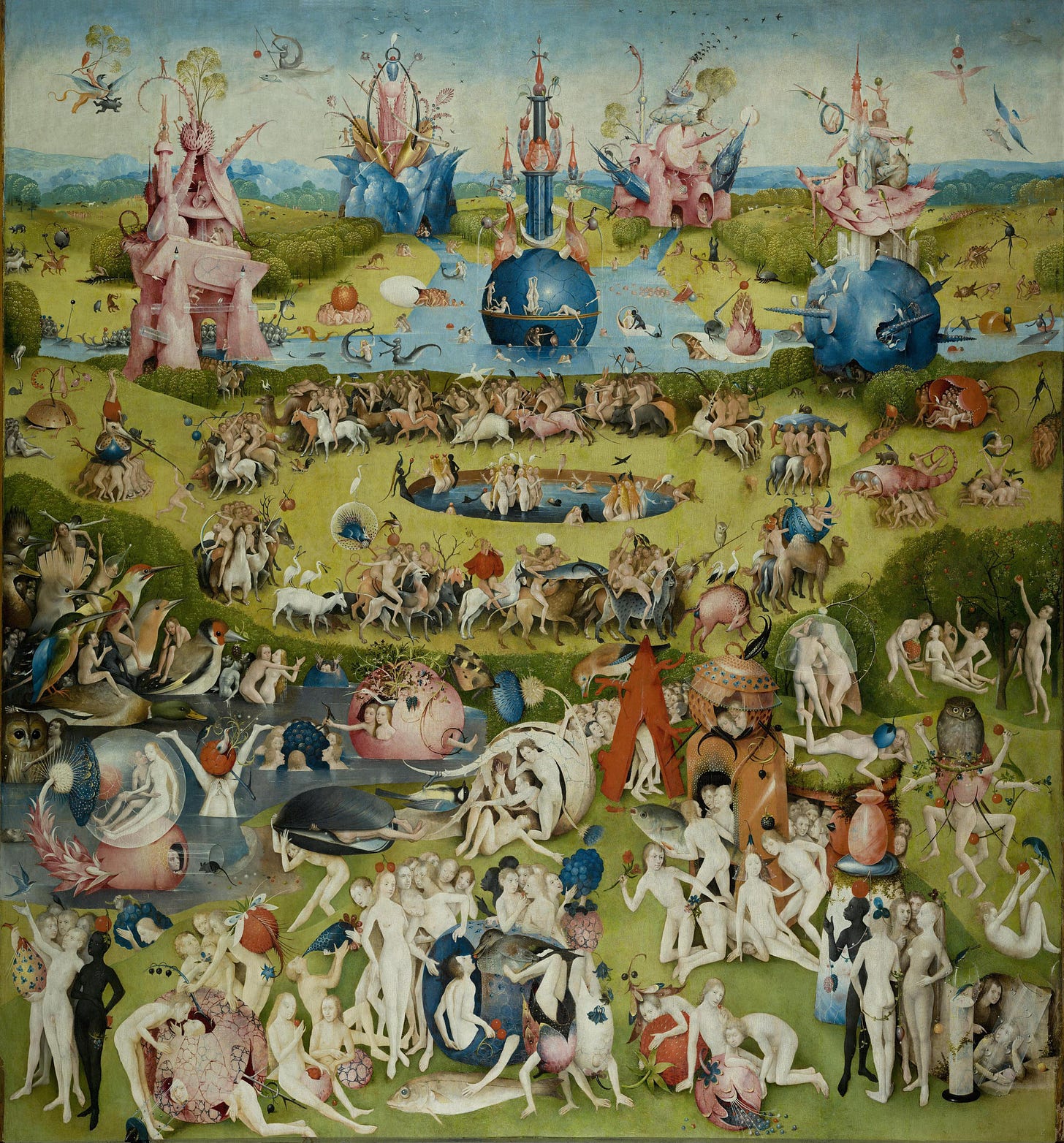
Hieronymus Bosch - The Garden of Earthly Delights (Center panel)
1969-1970 was a highly productive year for Syd. During that long year, he released two solo albums, his only ones in his brief four-year music career.
Malcolm Jones produced most the first album, “The Mad Cap Laughs”, with David Gilmour taking over the production in the last days. The sessions under Jones were leisurely and jam-like, with Syd adding bits and pieces and elaborating on the basic song elements. Over six months, he recorded rudimentary singing and guitar playing, later supplemented by the psychedelic band Soft Machine.
According to Hugh Hopper, Soft Machine's bassist, upon hearing the album's songs, the band immediately began composing. Syd listened to their initial drafts and deemed them sufficient; he saw no need to refine the songs further. What he sought was an atmosphere, which he felt the band provided, and he was satisfied with that.
Listeners familiar with Syd from his Cambridge days recognized the places and woods mentioned in his songs. However, what stood out most was his fixation on childhood. Syd seemed determined to remain in that lost fairyland, resisting the transition to the adult world of his parents.
The single “Octopus”, for example, is a compilation of poetry from various sources, most notably from the Nonsense rhythms of Edward Lear. A mad, beautiful song for a mad, beautiful album. It's raw Syd. Underproduced Syd. The best Syd we have.
Trip to heave and ho
Up down, to and fro'
You have no word
Trip, trip to a dream dragon
Hide your wings in a ghost tower
Sails cackling at every plate we break
Was cracked by scattered needles
The little minute gong
Coughs and clears his throat
Madam you see before you stand
Hey ho, never be still
The old original favorite grand
Grasshoppers green Herbarian band
And the tune they play is "In Us Confide"
By the time of the second album, Barrett, the official producer was David Gilmour. Unlike Jones, he took much more of an active role, pushing Syd not to "settle" for a raw version of his songs but to aim for a finished product. What was a natural process for most musicians—especially at that time, with the Beatles' grand productions, and years before the rise of Punk Rock and decades before the allure of homemade albums with their charming unpolished realism—was counterintuitive for Syd.
The Mad Cap Laughs is a raw album with the mistakes and all the improvisation left in. For the second album, Gilmour pushed Syd to create a more cohesive and less spontaneous work. However, Syd tended to initiate ideas without fully completing them at the time. Gilmour, and later Waters who joined the production for a while, imposed order where Syd preferred chaos, as the master of stream-of-consciousness.
But even beyond differing creative visions, Syd's mental state at the time didn't allow for sustained work. His erratic nature and concentration issues meant that when Gilmour and Waters were brought in essentially to salvage the first album—EMI Records was considering shelving it—they had only three days to finish recording and production of The Mad Cap Laughs. The result, in my opinion, turned out great. better than the second and more polished Barrett.
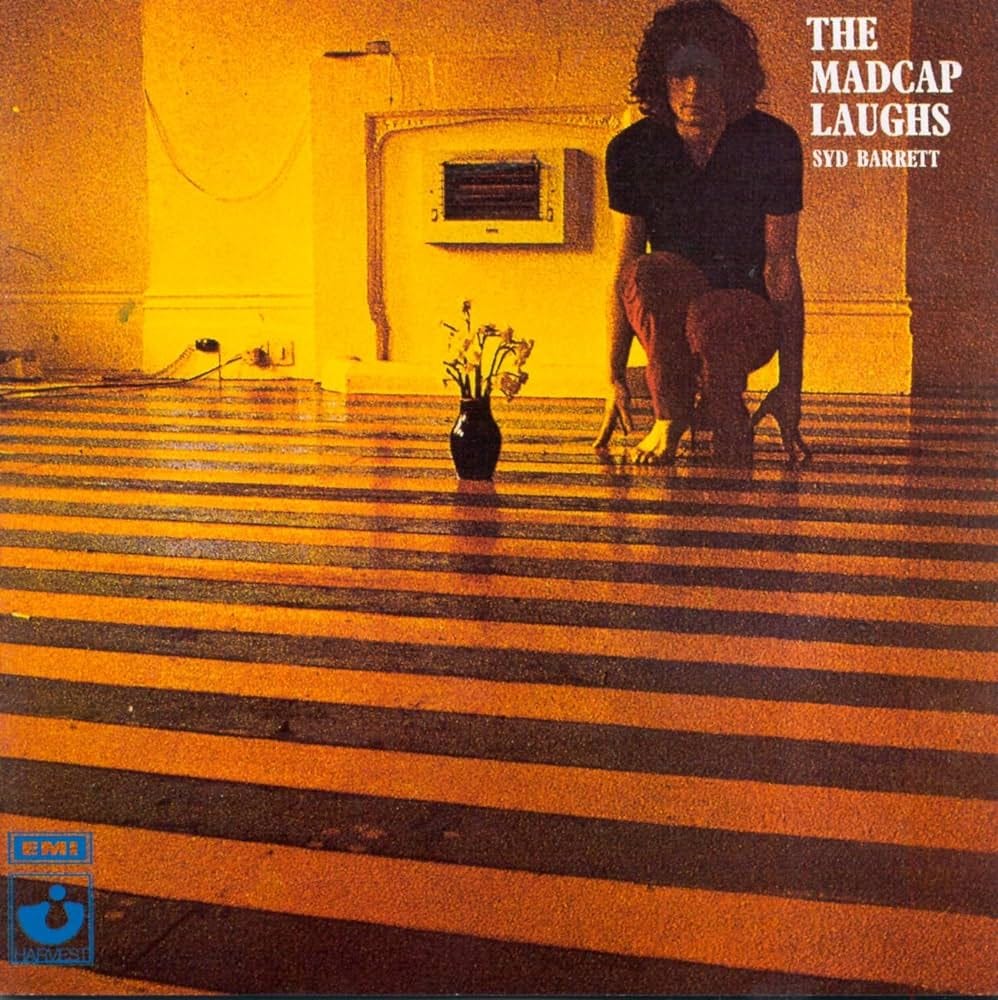
In a recent 2023 interview, Syd's sister Rosemary Breen reflected on Syd's time in Pink Floyd, saying, "I did go and see him several times. But it wasn't enjoyable because he was away with the fairies, and I didn't like to see that."
Breen and others have suggested that Syd should never have pursued music in the first place, as it was initially just a hobby. Instead, they believe he should have pursued his art. The pressure placed on him to be a pop star, an idol, to write the next hit, was not something he desired.
Listening to her moving, thoughtful interview about her older brother, I began to reconsider this text in a different light. For her, Syd was always the clown—a "bright cookie" who shouldn't be taken too seriously because he saw life as a joke. Yes, his is a tragic tale. Yes, he could have become a significant artist. But, according to Breen, we shouldn’t look for hidden meaning in his work, in what he wrote.
And yet, the "what if" approach, this game of alternatives continues to linger in my mind.
Listening to Syd’s Pink Floyd compared to the Floyd post-Syd is like listening to two completely different bands. Most of us might prefer the latter band. However, what we must consider is that while Pink Floyd found "their sound" in albums like Wish You Were Here, the original band with Syd at the helm never had the opportunity to discover its own.
Thanks for reading The Library of Babel! Subscribe for free to receive new posts and support my work.